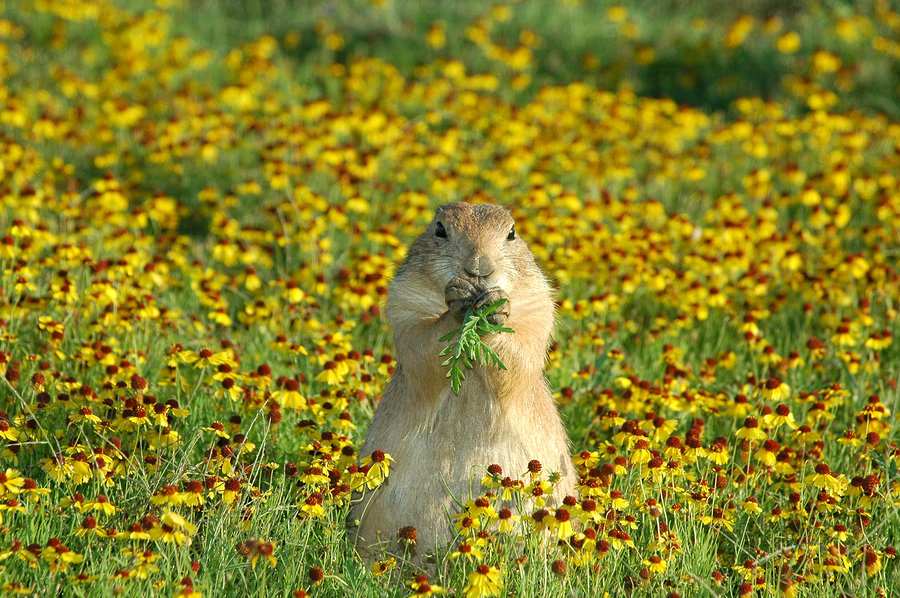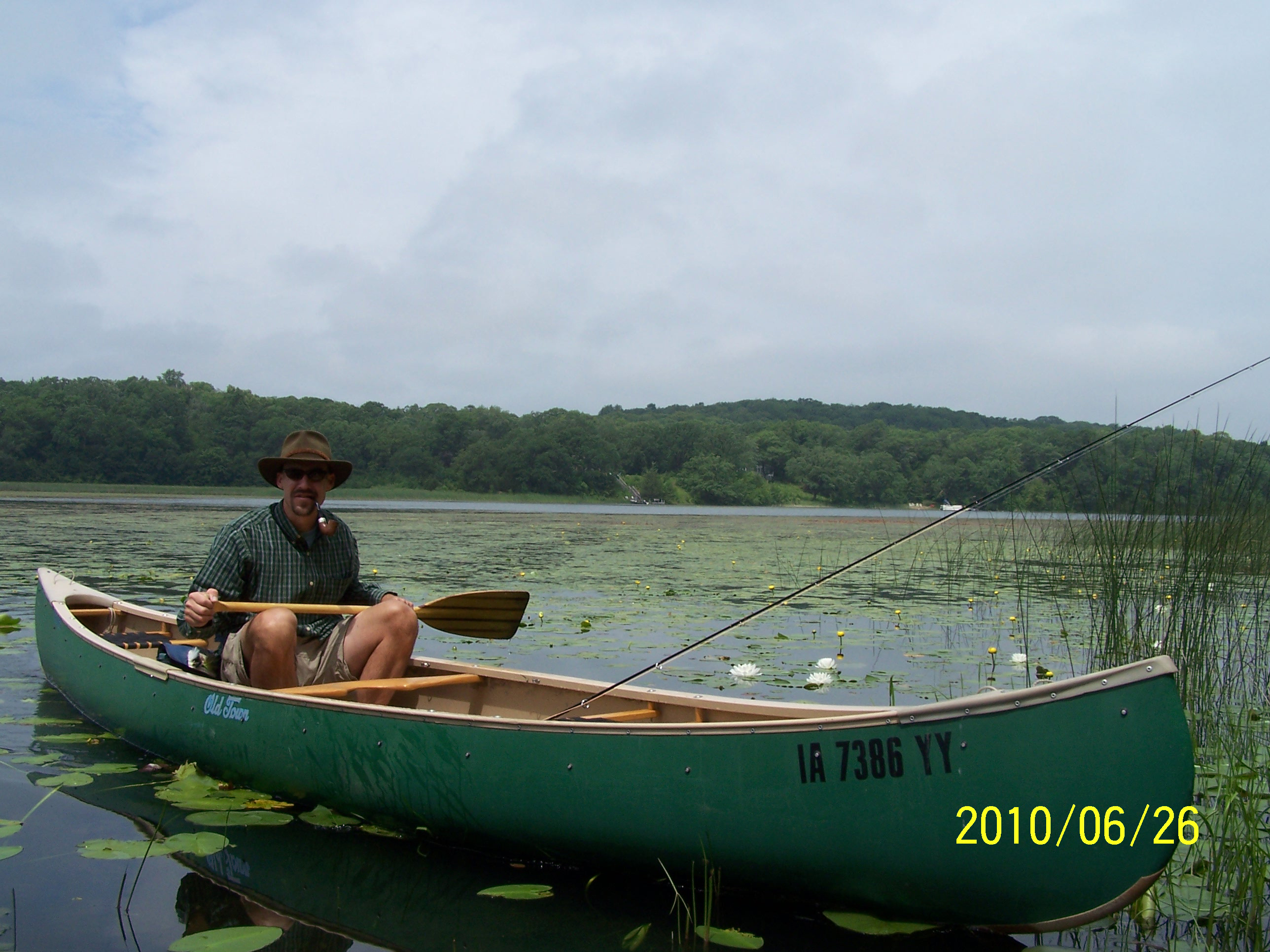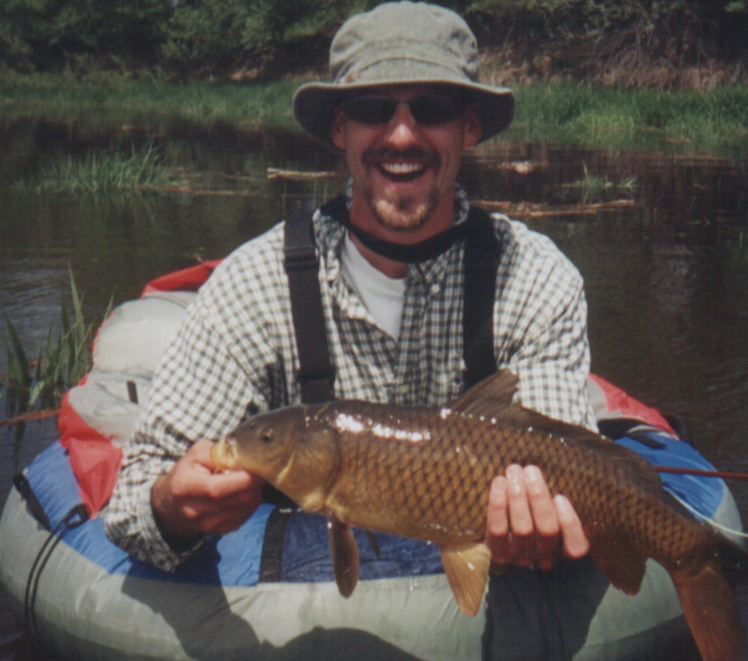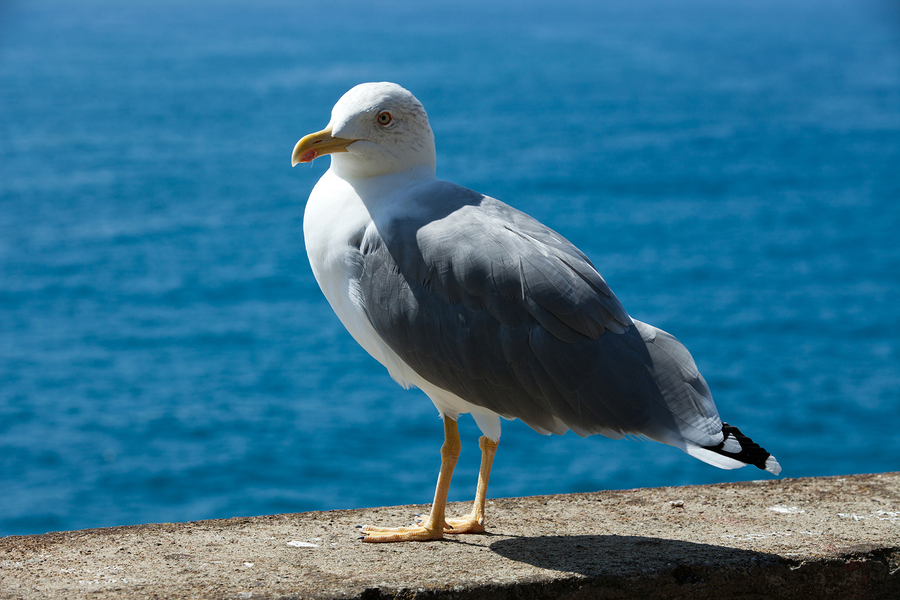"Trash"Animals
Air Date: Week of June 28, 2013

Prairie dogs are considered a threat to livestock in the Midwest because of the holes they dig across pastures. Yet the story that livestock will break their legs falling into prairie dog burrows seems to be largely myth. (Photo: Big Stock Photo).
Some species of animals, especially unloved invasive species like pigeons and carp are so reviled they're regarded as trash. Dave Johnson, co-editor of a new book of essays called Trash Animals, an essay anthology, joins host Steve Curwood to discuss how humans treat their co-inhabitors.
Transcript
CURWOOD: So, the seventeen-year cicadas may be leaving behind their smelly corpses like so much trash as they complete their life-cycle, but there are some people who regard whole categories of animals as ‘trash’. Dave Johnson is an instructional designer at the Institute for Learning and Teaching at Colorado State University and he helped edit a book called Trash Animals: Nature’s Filthy, Feral, Invasive and Unwanted Species. He says he became fascinated with these creatures after he started catching one of America’s least desired fish.

Dave Johnson, co-editor of Trash Animals, fishes for much despised carp. Carp are a well-known “trash” fish because of they thrive in polluted waters. (Photo: Dave Johnson)
JOHNSON: I was interested in trash animals, because I had been clerking in a fly shop, and fly fishing is all about trout. And I went out to fly fish for White Bass. And so I hooked probably about a 15-pound carp, which is much bigger than any White Bass that I had ever caught. Wherever I moved, I would always look for places that potentially had carp. And the reactions I got from other anglers - they were either very angry that carp were even in those waters, or they would dismiss it outright as some kind of lunatic activity.
CURWOOD: On catching carp, did you keep them and eat them?

Dave Johnson, co-editor of Trash Animals, holds up his prize carp of the day. Few people eat carp because it takes a long time to prepare properly, and tends to have a muddy flavor. (Photo: Dave Johnson)
JOHNSON: I did once. The one day I caught a nice sized carp, about 22-pounds, just north of Fort Collins here and my daughter was with me. And she said, ‘dad, can we take this fish home and eat it?’ And then I said, ‘well, at this point I sort of feel obligated.’ And so, I have a book that explains step-by-step how to clean them. I worked on one side of the carp and it took me 45 minutes, which is a lot longer than it takes to prepare any other kind of fish. And so I then flipped the carp over because I was impatient and filleted it just as I would any other fish. And we went inside and we cooked the one side that we had prepared properly, and it was fine - it almost tasted like catfish. And we prepared the other side, and it stank up the house for three days.
CURWOOD: [CHUCKLES] Oh my.
JOHNSON: I almost thought about throwing the pan away. And that’s the interesting thing about the history of carp introduction. Just within about 10 or 15 years, people had decided that it was a big mistake because of the flavor of the fish.
CURWOOD: ‘Trash’ is a powerful word in our language. As a verb, it means to be violent. And also you can use it as a perjorative to refer to people. I mean, there’s trailer trash, white trash.
JOHNSON: A trash animal has everything to do with the way humans value other species. So the first mention of a trash animal in print, comes from a document, and it was introduced to parliament in 1749. It was called the Wealth of Great Britain in the Ocean. And one of their assessors noted that the Dutch had three kinds of marked herring, two were valuable, and the last was called ‘trash’. So the way people have been valuing animals, whether it has to do with economics, whether it has to do with aesthetics, whether they just think they’re pretty or desirable, for anglers, whether or not they fight or jump, we tend to make these categories for animals, and one category is a trash animal.
CURWOOD: Of course in nature, there’s no such thing as trash. It’s just a resource that’s being used by whatever is going to use it next. But us humans, we have this concept of trash.

Sea gull is a common term for the 28 species of gull that thrive in North America. By lumping all the species together, Trash Animals argues that we overlook what makes these birds unique. (Photo: Big Stock Photo)
JOHNSON: And it’s largely cultural. My co-editor and I, we use this term, as we say in the book, as a tool for analysis. It’s a way to really think about the way we treat animals. Because if we do have so-called trash animals, then we are not only assigning them value, but we’re also thinking about ways that we’re going to act toward those animals. We’re thinking about ways that policy might be enforced.
CURWOOD: Let’s talk about the different animals that made it into your book. Everything from gulls to wolves, prairie dogs and pigeons of course. For example, how did the Canada goose become a trash animal?

The Canada goose, widely considered a “trash” animal, was once used to as a decoy for hunters to lure larger game. This encouraged the animal to become a permanent resident, rather than the migrant it once was. (Photo: Big Stock Photo)
JOHNSON: This is a really interesting story. And Bernie Quetchenbach’s essay in the book is one of my favorite. I mean, it tells a story of a time in the early 20th century when migratory Canada geese, had almost become extinct, probably due to habitat loss because we were draining wetlands at the time, and probably also due to hunting. So there was a massive public relations campaign where any farmer, basically anybody could go and get Canada geese and they could raise them in their backyards, and then release them into the wild. And this was going to save the population. But what happened through this process, is these people who were raising geese and releasing them were actually changing their behavior.
CURWOOD: So, this is a native species here in the United States, the Canada goose, and because people successfully kept it from the brink of extinction we consider it trash.
JOHNSON: Yes, because there are too many. I’ve even heard of Canada geese referred to as sky carp. So we still have migratory Canada geese, but we have to distinguish between those geese, and the geese that visit our golf courses and our city parks - the ones that never really go anywhere. If they do migrate, it’s across town.
CURWOOD: Let’s talk about coyotes and prairie dogs. I mean, those are native to North America, and yet they are in your trash animal anthology as well. Why is that?
JOHNSON: The way that humans have changed the landscape has either been detrimental for prairie dogs or it has helped the coyote. In regards to prairie dogs, there’s a lot of mythology. I grew up in rural Texas, in part of a ranching family. And even though we don’t have prairie dogs in Texas, I’d always heard that prairie dog holes were dangerous because horses or cattle could break their legs on them. Although when I asked my uncle who drives all over the west hauling cattle if he had ever seen this happen, he had to admit to me, no he hadn’t, he had just heard the stories. So in that respect, there’s a story about prairie dogs competing with humans - in that case it’s the raising of livestock or keeping of horses. Coyotes, because we eradicated wolves, we helped increase their range and numbers all over the United States. It’s easy to kill animals that to us have no value. Even those that I knew growing up who would go out and kill as many coyotes as they could, they still had respect for other species. And so, the way humans value animals determines to a large degree how we treat them. And it seems like an obvious statement, but the contradictions are also kind of interesting because on one hand we don’t feel bad at all about killing a bunch of coyotes, but on the other hand if someone were to shoot my mother’s cattle, everyone would be angry about this.
CURWOOD: As a kid growing up, you probably shot a lot of coyotes. How do you feel about that now?
JOHNSON: I feel awfully guilty about it. So at the time we were calling up coyotes with a caller, and shooting them - we were thinking that we were protecting our cattle. When in reality, we weren’t helping ourselves out at all because a female coyote can triple her litter sizes within a generation or two if the pack is threatened. So by killing a few coyotes, we were only making this perceived problem worse.
CURWOOD: You know, I suppose from the perspective of the animals, with seven billion people, there are too many people. Maybe we’re trash.
JOHNSON: A lot of the qualities of the animals that we call trash, have a lot of the qualities that humans have. Humans invade new spaces. We tend to change the landscape, we make the landscape suit us. And that often crowds out other species. We outcompete them. If those species compete with us for resources, we either use what we call management campaigns, or we eradicate them.
CURWOOD: What risks does humanity take on for itself by considering certain other species as trash, stuff to be gotten rid of violently if necessary?

Merely using the word trash to refer to animals suggests that humans want to cast out or throw away these generalized animals. (Photo: Big Stock Photo)
JOHNSON: There is a human perspective involved here that sort of determines your values about some species. So an urban environmentalist, probably white, probably middle class, thinks that reintroducing wolves to Yellowstone and seeing them thrive is a really good idea. There’s a rancher out there who leases property next to Yellowstone, who is thinking this is a threat to my cattle and my way of life. It’s a threat to me personally.
CURWOOD: What do you hope people will take away from this book?
JOHNSON: I really hope they’ll question their own values about animals. Again, the thing about trash animals is that it comes back to this idea that humans are placing value on species. And one of the things we wanted to get at in the collection, was to have people really think about this. You know, where do these values come from? And sometimes knowing a little bit of the history of the animal, how it got here, or where it came from, or whether it’s native or invasive, knowing something about the animal’s biology, you can start to develop an appreciation for the animal, start to see it in a new way. And we thought maybe if people can do that, they can question these values, they can question the whole idea of having a trash animal in the first place.
CURWOOD: David Johnson is an Instructional Designer at the Institute for Learning and Teaching at Colorado State University and co-editor of a book called Trash Animals. Thanks so much for taking the time with us, Dave.
JOHNSON: You’re very welcome. It was a pleasure to be here.
Links
Living on Earth wants to hear from you!
Living on Earth
62 Calef Highway, Suite 212
Lee, NH 03861
Telephone: 617-287-4121
E-mail: comments@loe.org
Newsletter [Click here]
Donate to Living on Earth!
Living on Earth is an independent media program and relies entirely on contributions from listeners and institutions supporting public service. Please donate now to preserve an independent environmental voice.
NewsletterLiving on Earth offers a weekly delivery of the show's rundown to your mailbox. Sign up for our newsletter today!
 Sailors For The Sea: Be the change you want to sea.
Sailors For The Sea: Be the change you want to sea.
 The Grantham Foundation for the Protection of the Environment: Committed to protecting and improving the health of the global environment.
The Grantham Foundation for the Protection of the Environment: Committed to protecting and improving the health of the global environment.
 Contribute to Living on Earth and receive, as our gift to you, an archival print of one of Mark Seth Lender's extraordinary wildlife photographs. Follow the link to see Mark's current collection of photographs.
Contribute to Living on Earth and receive, as our gift to you, an archival print of one of Mark Seth Lender's extraordinary wildlife photographs. Follow the link to see Mark's current collection of photographs.
 Buy a signed copy of Mark Seth Lender's book Smeagull the Seagull & support Living on Earth
Buy a signed copy of Mark Seth Lender's book Smeagull the Seagull & support Living on Earth

